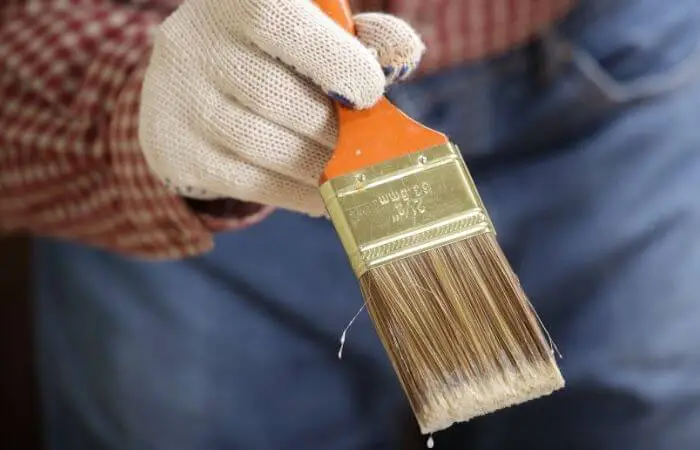Plywood has a small amount of water resistance, but it is not fully waterproof.
Ergo, you have to treat or change the wood with a sealant if you wish to make it more water-resistant and/or waterproof, keep reading to find out how best to do this.
3 Steps To Waterproof Your Plywood Sheets:
Follow these steps to make your plywood waterproof:
1. Seal The Edges
Plywood is most vulnerable to water on its edges. This is because they do not come sealed at the edge so water can easily be absorbed in this area, left exposed to moisture for a long time water will soak up through the edges into the entire sheet making it quickly break down into an unusable pile of splinters..

..so sealing the edges is vital if you are going to make your Plywood waterproof.
All your need to do is get a good quality penetrating epoxy wood sealant (these are available at all D.I.Y stores as well as places such as Walmart & Amazon), and coat the entire edge of the plywood with it.
Ensure that no spot is left uncoated.
Pay particular attention to the corners as these are the weakest points that are most prone to water damage.
Ideally, give the plywood two or three coats until it no longer absorbs the sealant.
If the plywood is only going to be occasionally wet then waterproofing the edges can be enough to ensure the object stays useful for its entire lifespan.
Epoxy is very effective and is commonly used to waterproof plywood for boats and subfloors.
2. Fill Holes
If the plywood has been used for anything else in the past it may have bail or screw holes in it.
These provide an easy access route for water to get inside the plywood which will cause it to break down inside.
It is therefore important that all holes are completely filled and properly sealed so that this doesn’t happen.
Depending on the size of the hole you may need to use polycell waterproof filler to fill the hole, however if the hole is very small you can simply fill it with a liberal coating of wood sealant.
3. Seal The Rest Of The Wood
If your plywood is going to be exposed to the elements permanently then completely sealing it is a good idea.
As above, use the same sealant and liberally coat the entirety of the plywood (both sides of course) in it.
Ideally, give it at least a couple of coats.
Also Read:
Is MDF Waterproof?
Is OSB Waterproof?
Types Of Sealants You Can Use To Waterproof Plywood
There are a number of different types of sealants you could use to effectively waterproof your plywood:
Penetrating epoxy sealer
This is a sealant chemical that is liquid and fluid enough to get in between the cracks and fibers of the wood and then dries (cures) to seal the wood.
If you have saturated the wood correctly and allowed it to dry correctly, then one coating may be fine.
However, if your wood is going to be exposed to a lot of moisture, then two coats is more reasonable.
In most cases, the two coats simply ensure you didn’t miss any spots and also sures-up the waterproofing offered by the first layer, (just like putting on two raincoats ensures you are less likely to get wet in a rainstorm).
Polyurethane varnish
Varnish offers a bit more protection against the weather and outdoor elements than standard sealants.
Varnish can also look nicer if your wooden object also serves a decorative purpose (like a sign, fence, artwork, shed, etc.).
Plywood Grade Impacts Water Resistance
Be aware not all plywood is the same.
There are different grades of plywood. In some cases, the types of wood may differ a little, but the biggest difference between grades is the glue and its mixture/composition within the plywood itself.

The veneers, i.e. the individual layers, may be made up of different types of wood, such as a mixture of hard and softwood.
This all impacts how the wood is graded.
As you can imagine, the different compositions of glue and wood are going to affect how water resistant the plywood is.
This matters because a highly water-resistant grade of plywood will require less work to make it waterproof.
Final Thoughts – How Much Water Does Plywood Actually Absorb?
Let’s say that you use a piece of plywood as a piece of fence, and the bottom is sat in a puddle most of the time because you live in a rainy area.
Let’s say the wood is not treated and is an average grade of wood.
It will take months for the water to cause any sort of noticeable damage.
It is often the other factors in the area that cause the most noticeable damage.
Insects may start eating the wood, and mold will often start growing (making the wood look darker at the bottom).
Heat and wind will also take its toll since the wood is weaker when it has absorbed water.
However if you only need the plywood to be outside in the short term it will cope with dampness fine, but if it is going to be exposed for months and months then sealing it is a good idea.

